Urban Spider Chart
Urban Spider Chart
Shown below are several common Kentucky spiders. There are lots more species than the ones shown below, but these are some of the most common ones encountered by people in Kentucky. Click on the image to learn more.
Spiders of Medical Significance

Other Common Kentucky Spiders
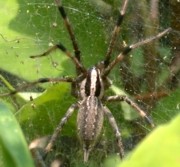

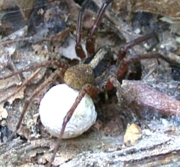
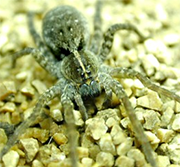
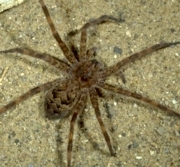
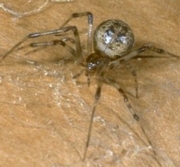
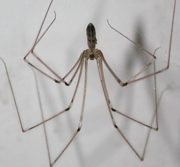
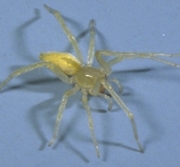
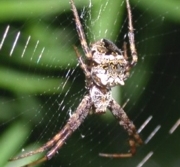
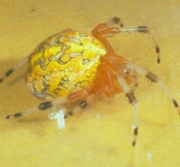


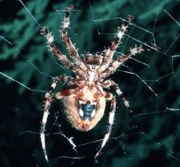

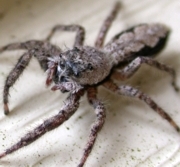
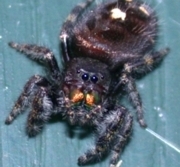

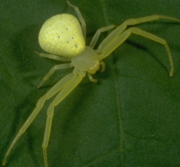
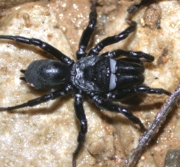
Black Widow
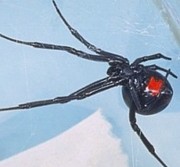 Size: Adult female is about 1/2 inch long.
Size: Adult female is about 1/2 inch long.
Color: Adult females are glossy black with a variable number of red markings on the top and bottom of abdomen. Adults males are similar, but with a few white markings. Juveniles are highly variable.
Features: Abdomen is nearly spherical on adult females and juveniles. Male is slimmer with longer legs (pictured here).
Notes: Bites are very serious and require immediate medical attention, but the spider is timid and unlikely to bite unless handled. Black widows are common all over Kentucky. They tend to occur in concealed outdoor locations: piles of rocks, piles of firewood, and dark corners of garages and out-buildings. Females are common; males are very rarely encountered.
Read More: Eliminating Spiders Around Homes and Buildings (ENT-623)
Brown Recluse
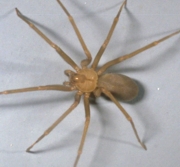 Size: About the size of a U.S. quarter, with legs outstretched.
Size: About the size of a U.S. quarter, with legs outstretched.
Color: Tan to dark brown, abdomen and legs are uniformly colored with no stripes, bands, or mottling. The legs are long and thin and lack conspicuous spines.
Features: Dark violin-shaped mark on back, with the neck of the violin pointing toward the rear (abdomen) of the spider. This feature is consistent in adult brown recluses, but can be hard to see and is less obvious in younger spiders. Also, brown recluses only have six eyes: most Kentucky spiders have eight.
Notes: Bites are very serious and require immediate medical attention, but brown recluses are timid and unlikely to bite unless handled. These spiders are more common in Western KY, less common in Central and Southeastern KY. They tend to occur in hidden locations indoors and outdoors: piles of cardboard or paper, stacks of cut wood, and wall-voids of buildings.
Read More: Brown Recluse Spider (ENT-631)

